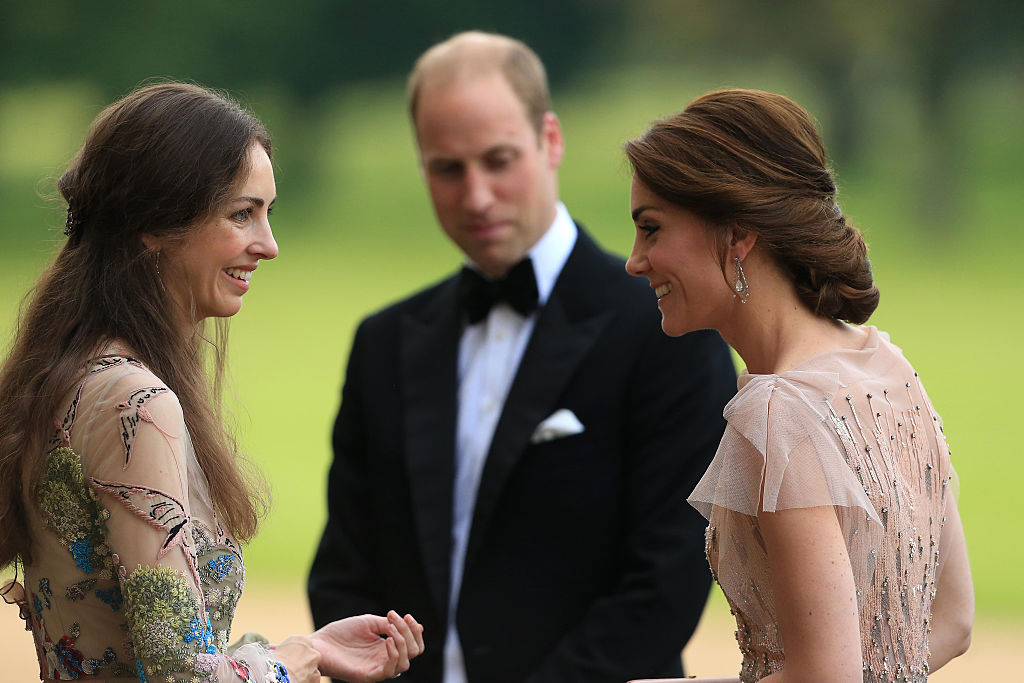
Questions surrounding the whereabouts of Kate Middleton, the Princess of Wales who hasn’t made an official public appearance since December 2023, have given rise to a number of conspiracy theories, including the resurrection of yearsold speculation that her husband Prince William is having an affair with British noblewoman Rose Hanbury, the Marchioness of Cholmondeley (pronounced Chumley).
Hanbury’s lawyers told Business Insider that the illicit romance rumors are “completely false,” but as her profile has risen in recent weeks due to an intensification of public interest around the royal family, online sleuths have zeroed in on what they suspect are the unsavory origins of her furniture.
After images were recently widely circulated anew from older stories in the Financial Times, Vanity Fair, and other media about Hanbury and Houghton Hall—the 18th-century estate in the Norfolk countryside where she lives with her husband David Rocksavage, the Marquess of Cholmondeley, and their three children—some social media users have taken particular note of specific pieces of oriental decor, suggesting that they may have been pillaged from China during the late Qing Dynasty, toward the end of the 19th century.
“The luxurious life of Prince William’s ‘mistress’ Rose actually came from China,” reads the title of a post last week on Xiaohongshu, an Instagram-like Chinese social media platform. According to the post—and similar ones spread across other Chinese social media platforms like Weibo and Douyin (the Chinese version of TikTok) and eventually also on the likes of TikTok, YouTube, and X (formerly Twitter)—Hanbury’s husband had inherited the furniture in question from the Sassoons (of which he is a descendant through his paternal grandmother, Sybil Sassoon).
“The Sassoons started to accumulate their wealth by looting late Qing China,” the Xiaohongshu post claims.
In fact, the Sassoons, nicknamed “the Rothschilds of the East,” were a Jewish Baghdadi family that owned and oversaw a 19th-century trading empire, which grew much of its immense fortune dealing in commodities like textiles, tea, and notably opium across India, China, and beyond.
As future generations of Sassoons gravitated toward England, they officially entered the British aristocracy when the family patriarch’s son Abdallah was knighted in 1872 as Sir Albert. Since then, the Sassoons gained prominence as wealthy business owners, politicians, and friends of the royal family.

While the Sassoons played a significant role in shaping China and were avid collectors of art from around the world, it’s unclear whether they acquired specific items through purchase or pilfering. The height of their business in the country, however, coincided with China’s “century of humiliation,” which started in 1839 and ended in 1945 and was marked by the looting of millions of artifacts—most notably from the Old Summer Palace in Beijing, which was ransacked by British and French soldiers during the second Opium War.
It’s unclear where exactly each piece of furniture in Houghton Hall came from, though some were acquired by the Victoria and Albert Museum in 2002 to be conserved in situ. The scrutiny of Hanbury’s home decor has reignited broader calls for the return of other potentially misappropriated foreign artifacts in the U.K.
Read More: After Queen Elizabeth II’s Death, Many Indians Are Demanding the Return of the Kohinoor Diamond
The British Museum, which has received donated collections from the Sassoons—along with other museums around the world—has been accused of housing numerous plundered Chinese artifacts and has become the target of nationalist activism in China. After around 2,000 items were reported missing from an alleged theft last year, Chinese state media demanded the museum return its Chinese cultural relics, arguing that the museum was failing to take good care of its property.
“This is legitimately one of my favorite unanticipated side-plots of the whole insane royal saga,” posted Ellie Hall, a former royals reporter for BuzzFeed News who has been documenting each twist and turn in the ongoing story of Princess Kate’s absence and the global fascination with investigating every detail related to it.
More Must-Reads from TIME
- Inside Elon Musk’s War on Washington
- Meet the 2025 Women of the Year
- The Harsh Truth About Disability Inclusion
- Why Do More Young Adults Have Cancer?
- Colman Domingo Leads With Radical Love
- How to Get Better at Doing Things Alone
- Cecily Strong on Goober the Clown
- Column: The Rise of America’s Broligarchy
Contact us at letters@time.com